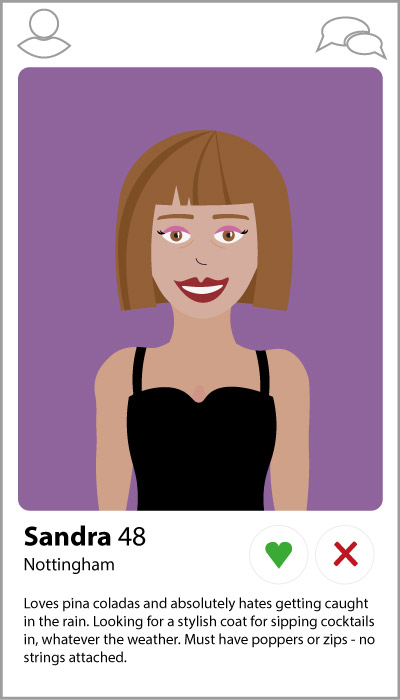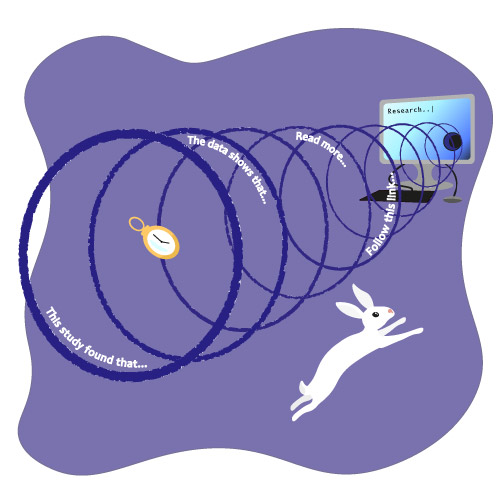If you’re in the SEO game, you’ll have repeatedly heard the phrase, “content is king”. But a finished piece of content is just the tip of the writerly iceberg. Below the surface, planning forms the mass.
Some would assume that coming up with ideas is the easy bit, and sometimes it is, but we’ve all hit a creative block from time to time. Creativity may come naturally to a few lucky writers, but the rest have to coerce it.
Effective planning can make a world of difference to both your content and your attitude towards it. Planning gives you a direction and a framework to cling to, so you don’t fall too far down the rabbit hole of research and waffle for ten minutes about something you could have summarised in a couple of sentences. The purpose of content isn’t telling your audience everything you know on a subject; it’s an opportunity to tell your audience everything they need to know about it.
It can be tempting to skip the planning stage because of time-intensity, but when done well, planning can be one of the most fun and rewarding parts of the process. Your content planning should be just as creative as your content so that you’re raring to write as much as your audience is raring to read.
So how do we effectively plan and create better content ideas? I’m glad you asked!
- Be your audience.
Get into the mind of your audience. Get into their personas. Understand what they like and dislike, what they care about, their relationships, where they go and what they do. What are they thinking? What are they asking? What do they need to know about this content topic?
This obviously takes some time and requires in-depth research rather than just imagining stereotypes, but you should only need to do this thoroughly at the beginning of the content creation process for this business.
Do some of your own market research; talk to real people and go through your customer process yourself. What questions arise when using your site? Is everything you’re looking for easy to read and easy to navigate to? From using your product or service as a first-time user, what do you want to know about it? What solutions are you looking for?
If you want to add some fun to your persona-building, try making character sheets as if they were in a role-playing game, or write up Tinder profiles that would match them with your product. Have an office fancy dress day to help you get into your target audience’s heads. Or you can simply profile them with a customer profiling template.
Once you’ve made your customer personas, reference back to your image of Margaret throughout the content process – would she find your headline intriguing? Would she click this link or go back to watching Emmerdale?
There are many ways to get to know your audience better depending on your team’s processes and your target market.

- Brainstorm with people.
This is my absolute favourite part of the content process. Allocate some time to sit in a room with your team or a focus group. You might gain new insight from someone who is completely independent from the topic or business to get an outsider’s opinion. Chances are, your top of the funnel customers will have similar opinions.
Start off by spitballing ideas, no matter how terrible they may seem. You may want to do some research mid-brainstorm to get going, but talking through your mental process can help someone else achieve that eureka moment, and vice versa.
You’ll almost see that cartoon lightbulb light up over their heads when a rubbish idea paves the way to a good one. Any ideas generated that aren’t currently relevant should be saved for later.
Try to generate ideas that will not only answer the user’s query in an interesting way, but can also interest the person writing it, otherwise it shows in the writing.
Remember, brainstorming isn’t there to necessarily provide solutions, but to raise questions and find ways of thinking about a problem from new angles.
- Investigate competitors.
There’s a good chance in the oversaturated world of online content that your competitors have already covered your topic (there are 1,600,000,000 other search results for ‘tips for creating better content ideas’!).
By seeing how your competitors approached a topic, you can plug up the gaps with yours.
See what elements the highest ranking pages have. Do they have unique images, infographics or screenshots, videos, lists? Is the information up to date and easy to read? Are they brief or overwhelming in detail? Are there particular areas you could expand upon? Whatever they’re lacking could be a great selling point for your article.
- Query research.
As Google regularly stresses, effectively answering user queries should be the focus of web content. Look at SERPs and keywords for your ideas to see what your audience is searching for.
Look at Google Trends and scour news for updates in your niche. You can also create a content ideas calendar with upcoming events, holidays, and national days for content piggybacking.
No matter how broad your spectrum of ideas becomes, add them to the list. This may help to create cluster content for your topic later. Don’t try and answer every single user query on one page, though, unless you’re specifically putting together a guide.
- Read widely.
Content writers are in the wonderful position of learning a lot about their subjects. Try to become an expert in your client’s or business’s field through ample reading and research. Sign up to newsletters, join forums, and find niche areas for your topics. Just remember to not get too sucked into all the wonderful information you find. Save that research for other content.

- Think visually.
Visual content can increase user engagement by a massive and unignorable 650%. Content with visuals are more likely to keep users on the page, as well as making your content more attractive, memorable, and shareable. There are always opportunities for visual content, be it illustrative images, infographics, or videos.
Use unique images where possible. Although the majority of websites use stock images, they are extremely scroll-past-able. Stock images essentially act as a placeholder image for where you missed an opportunity. Unique images can offer content visibility in Google Images and another place to add your keywords via alt text.
However, stock images are better than no images to allow the reader’s eyes a rest.
- Use data.
Relevant data can both enhance your existing content and offer up new ideas. Find data to back up your content, or better yet, create your own dataset. There are several ways you can do this: focus group surveys, customer questionnaires, social media polls, interactive content like quizzes, etc. A primary data source is a goldmine for PR and links.
Then refer to tip number 6 of this blog post – visualise your findings and put them to use. This is your unique content, so use it. Flaunt it.
- Partnerships.
Creating and maintaining good relationships with active participants in your industry can have major benefits for both your content and your business overall. From academics to businesses, customers and clients – even your competitors, collaboration can go a long way towards getting links, increased brand awareness and gaining trust with a new audience.
Establishing partnerships provides more people for brainstorming and idea generation, and potentially more skills to work with – perhaps they have that in-house designer your team lacks to help make that supercontent you’ve always dreamed of.
- Just write.
If you’ve ever done a writing course, you’ll have been told to get up at 6am for some early morning writing so you’re closest to your unconsciousness and can avoid overthinking.
Of course, I’m not saying you should be getting up that early to start work, but the core principle is noteworthy at any time of day: don’t edit as you go, just keep going. Get everything written down. Then go grab a coffee and sift through the nonsense you’ve just written to find those few nuggets of pure gold.
It doesn’t even matter if you end up deleting the majority, your brain will be more awake and cleared of cobwebs, ready to produce your magnum opus.
Conversely, several of the tips in this blog post can clog up your creativity with the pressure of including the right amount of keywords or to only talk about certain areas whilst avoiding others. However, this may make the process longer if you have to go back and rework some of your writing. Find the process that works best for you.
- Hire us.
Of course, if all of the above is too much on top of everything else you do, you could always hire us. The KUMO Digital team offers content writing as part of our SEO services. Get in touch to see how we can transform your content.
Author Biography
Claire
Claire is a University of Nottingham student frustratingly close to finishing her Creative Writing Masters degree.
When she's not creating content for Kumo clients, Claire is glued to her PS4 controller, writing poetry, or reading a good sci-fi novel.